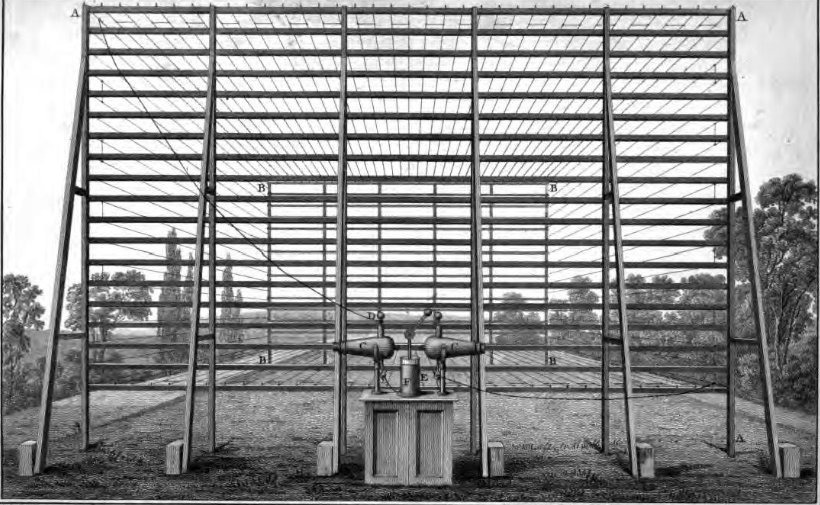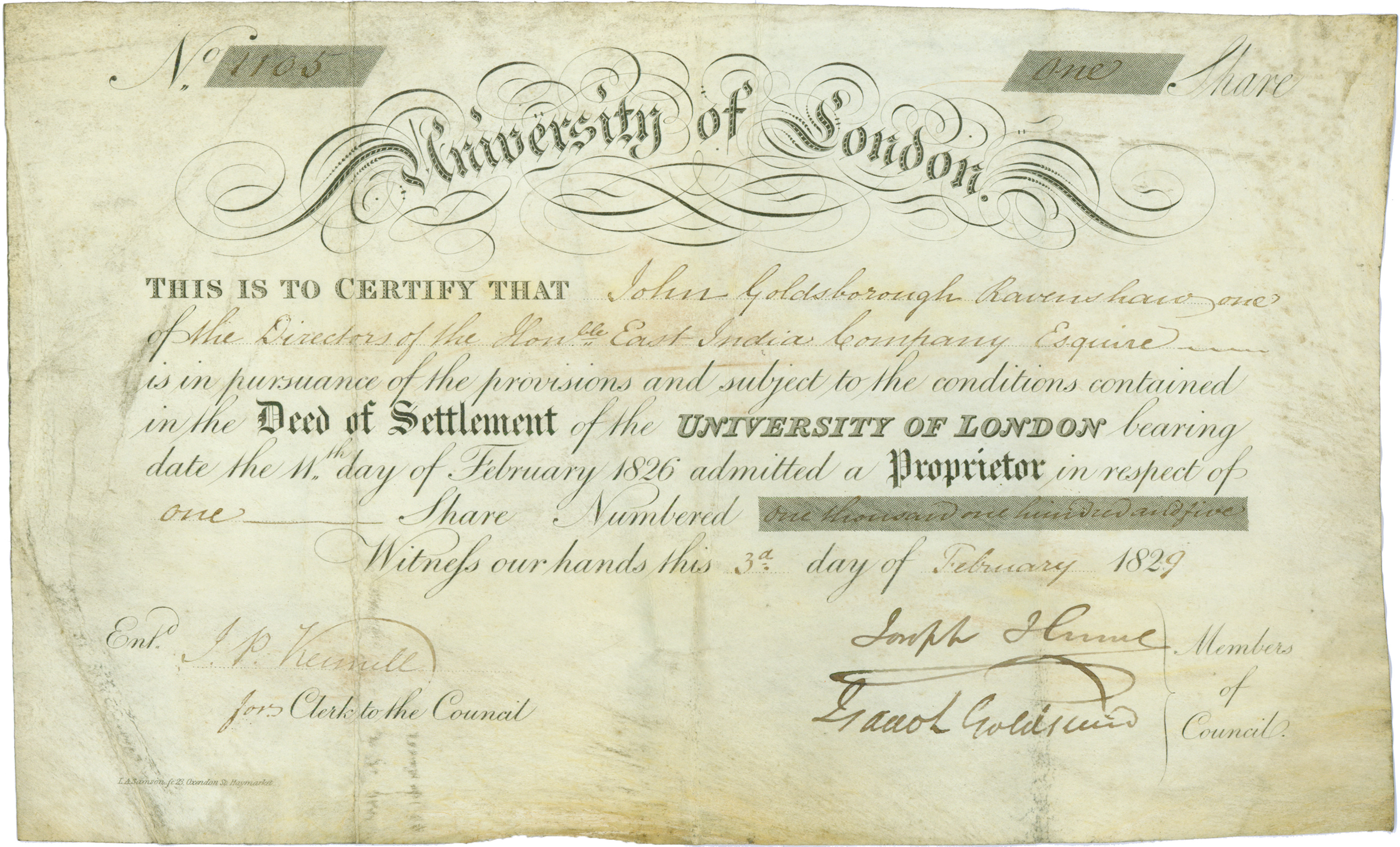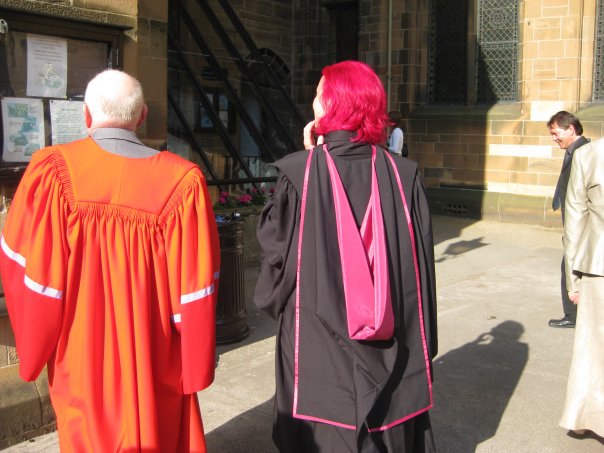|
Edmund Ronalds
Edmund Ronalds FCS FRSE (18 June 1819 – 9 September 1889) was an English academic and industrial chemist. He was co-author of a seminal series of books on chemical technology that helped begin university teaching of chemical applications for industry, and was a pioneer in the incorporation of advanced research into a manufacturing firm. Upbringing and family He was born on 18 June 1819 at 48 Canonbury Square in Islington. His father Edmund Sr was a London cheesemonger and the brother of inventor Sir Francis Ronalds and his mother Eliza Jemima was the daughter of Dr James Anderson, who ran a respected school in Hammersmith. For most of his childhood the family lived at Brixton Hill but they returned to Islington in 1839 and resided at the east end of Canonbury Place. He was the eldest of at least 12 children. Five of his siblings moved to New Zealand in the 1850s where his sisters married brothers of Harry Atkinson. Another sister spent her last years in Algiers. Two siblin ... [...More Info...] [...Related Items...] OR: [Wikipedia] [Google] [Baidu] |
Francis Ronalds
Sir Francis Ronalds Fellow of the Royal Society, FRS (21 February 17888 August 1873) was an English scientist and inventor, and arguably the first History of electrical engineering, electrical engineer. He was knighted for creating the first working electric telegraph over a substantial distance. In 1816 he laid an length of iron wire between wooden frames in his mother's garden and sent pulses using electrostatic generators. He also is known for creating the first electric clock in 1814. Upbringing and family Born to Francis Ronalds and Jane (née Field), wholesale cheesemongers, at their business premises at 109 Upper Thames Street, London, Thames Street, London, he attended Unitarianism, Unitarian minister Eliezer Cogan's school before being apprenticed to his father at the age of 14 through the Worshipful Company of Drapers, Drapers' Company. He ran the large business for some years. The family later resided in Canonbury Place and Highbury Terrace, both in Islington, at K ... [...More Info...] [...Related Items...] OR: [Wikipedia] [Google] [Baidu] |
Heinrich Gustav Magnus
Heinrich Gustav Magnus (; 2 May 1802 – 4 April 1870) was a German experimental scientist. His training was mostly in chemistry but his later research was mostly in physics. He spent the great bulk of his career at the University of Berlin, where he is remembered for his laboratory teaching as much as for his original research. He did not use his first given name, and was known throughout his life as Gustav Magnus. Education Magnus was born in Berlin to a Jewish family, his father a wealthy merchant. In his youth he received private instruction in mathematics and natural science. At the University of Berlin he studied chemistry and physics, 1822–27, and obtained a doctorate for a dissertation on tellurium in 1827. His doctoral adviser was Eilhard Mitscherlich. He then went to Stockholm for a year as a visiting research fellow at the laboratory of Jöns Jakob Berzelius (who was a personal friend of Mitscherlich). That was followed by a year in Paris at the laboratory of Joseph ... [...More Info...] [...Related Items...] OR: [Wikipedia] [Google] [Baidu] |
Edinburgh
Edinburgh is the capital city of Scotland and one of its 32 Council areas of Scotland, council areas. The city is located in southeast Scotland and is bounded to the north by the Firth of Forth and to the south by the Pentland Hills. Edinburgh had a population of in , making it the List of towns and cities in Scotland by population, second-most populous city in Scotland and the List of cities in the United Kingdom, seventh-most populous in the United Kingdom. The Functional urban area, wider metropolitan area had a population of 912,490 in the same year. Recognised as the capital of Scotland since at least the 15th century, Edinburgh is the seat of the Scottish Government, the Scottish Parliament, the Courts of Scotland, highest courts in Scotland, and the Palace of Holyroodhouse, the official residence of the Monarchy of the United Kingdom, British monarch in Scotland. It is also the annual venue of the General Assembly of the Church of Scotland. The city has long been a cent ... [...More Info...] [...Related Items...] OR: [Wikipedia] [Google] [Baidu] |
Coal Gas
Coal gas is a flammable gaseous fuel made from coal and supplied to the user via a piped distribution system. It is produced when coal is heated strongly in the absence of air. Town gas is a more general term referring to manufactured gaseous fuels produced for sale to consumers and municipalities. The original coal gas was produced by the coal gasification reaction, and the burnable component consisted of a mixture of carbon monoxide and hydrogen in roughly equal quantities by volume. Thus, coal gas is highly toxicity, toxic. Other compositions contain additional Calorific Value, calorific gases such as methane, produced by the Fischer–Tropsch process, and volatile hydrocarbons together with small quantities of non-calorific gases such as carbon dioxide and nitrogen. Prior to the development of natural gas supply and transmission—during the 1940s and 1950s in the United States and during the late 1960s and 1970s in the United Kingdom and Australia—almost all gas for fu ... [...More Info...] [...Related Items...] OR: [Wikipedia] [Google] [Baidu] |
Bonnington Chemical Works
The Bonnington Chemical Works was a pioneer coal tar processing plant established in Edinburgh. It was perhaps the first successful independent facility established for the integrated treatment of gasworks waste, and manufactured the residues of the Edinburgh gasworks into useful products for over half a century. History Gas lighting was introduced in Edinburgh in 1818. The production of coal gas generated considerable residues of coal tar and ammoniacal liquor which were further processed at the Bonnington Chemical Works. The Bonnington facility was located on Newhaven Road in Bonnington (between Edinburgh and Leith) near the south bank of the Water of Leith. George Dixon Longstaff recorded that the chemical works began in 1822 for the purpose of distilling coal tar to separate naphtha. This was supplied to Charles Macintosh for him to make waterproof fabrics, as epitomised by the Mackintosh. Longstaff was at that time assistant to Dr John Wilson Anderson, who taught practica ... [...More Info...] [...Related Items...] OR: [Wikipedia] [Google] [Baidu] |
Galway
Galway ( ; , ) is a City status in Ireland, city in (and the county town of) County Galway. It lies on the River Corrib between Lough Corrib and Galway Bay. It is the most populous settlement in the province of Connacht, the List of settlements on the island of Ireland by population, fifth most populous city on the island of Ireland and the List of urban areas in the Republic of Ireland, fourth most populous in the Republic of Ireland, with a population at the 2022 census of Ireland, 2022 census of 85,910. Located near an earlier settlement, Galway grew around a fortification built by the List of kings of Connacht, King of Connacht in 1124. A municipal charter in 1484 allowed citizens of the by then walled city to form a Galway City Council, council and mayoralty. Controlled largely by a group of merchant families, the Tribes of Galway, the city grew into a trading port. Following a period of decline, as of the 21st century, Galway is a tourist destination known for festivals ... [...More Info...] [...Related Items...] OR: [Wikipedia] [Google] [Baidu] |
NUI Galway
The University of Galway () is a public research university located in the city of Galway, Ireland. The university was founded in 1845 as "Queen's College, Galway". It was known as "University College, Galway" (UCG) () from 1908 to 1997 and as "National University of Ireland Galway" (NUI Galway) () from 1997 to 2022. In September 2022, it changed its name to "University of Galway". The University of Galway is a member of the Coimbra Group, a network of 40 long-established European universities. History The university was established in 1845 as Queen's College, Galway, together with Queen's College, Cork, and Queen's College, Belfast. It opened for teaching on 30 October 1849 with 68 students. In 1850, it became part of the Queen's University of Ireland, and its degrees were conferred in the name of that university. Located close to the city centre, the university campus stretches along the River Corrib. The oldest part of the university, the Quadrangle with its ''Aula Max ... [...More Info...] [...Related Items...] OR: [Wikipedia] [Google] [Baidu] |
Middlesex Hospital
Middlesex Hospital was a teaching hospital located in the Fitzrovia area of London, England. First opened as the Middlesex Infirmary in 1745 on Windmill Street, it was moved in 1757 to Mortimer Street where it remained until it was finally closed in 2005. Its staff and services were transferred to various sites within the University College London Hospitals NHS Foundation Trust, University College London Hospitals NHS Trust. The Middlesex Hospital Medical School, with a history dating back to 1746, merged with the medical school of University College London in 1987. History Development of the hospital The first Middlesex Hospital, which was named after the county of Middlesex, opened as the Middlesex Infirmary in Windmill Street in 1745. The infirmary started with 15 beds to provide medical treatment for the poor. Funding came from subscriptions and, in 1747, the hospital became the first in England to add lying-in (maternity) beds. Prior to 1773, the wards in the hospital wer ... [...More Info...] [...Related Items...] OR: [Wikipedia] [Google] [Baidu] |
Aldersgate Medical School
The Aldersgate Medical School was a medical school in east London, in existence from about 1825 to 1848. One of many private medical schools of the period, it had popular lecturers on its staff, and proved a serious rival to St. Bartholomew's Hospital as a teaching institution. Foundation The Aldersgate School was set up in 1825 by Frederick Tyrrell; the founding group included William Lawrence, William Coulson and others. At that point the shared medical school of Guy's Hospital and St. Thomas's Hospital was divided. Tyrrell lectured at the Aldersgate School, but later took a position at St. Thomas's, and was no longer involved with the Aldersgate school. Lawrence was also an early supporter of the school, lecturing on surgery in 1826–7; but he withdrew after taking a position at St. Bartholomew's Hospital. Lawrence was a reformer, and the background was his opposition to an 1824 regulation of the Royal College of Surgeons aiming to limit the number of medical schools that a ... [...More Info...] [...Related Items...] OR: [Wikipedia] [Google] [Baidu] |
University College London
University College London (Trade name, branded as UCL) is a Public university, public research university in London, England. It is a Member institutions of the University of London, member institution of the Federal university, federal University of London, and is the second-largest list of universities in the United Kingdom by enrolment, university in the United Kingdom by total enrolment and the largest by postgraduate enrolment. Established in 1826 as London University (though without university degree-awarding powers) by founders who were inspired by the radical ideas of Jeremy Bentham, UCL was the first university institution to be established in London, and the first in England to be entirely secular and to admit students regardless of their religion. It was also, in 1878, among the first university colleges to admit women alongside men, two years after University College, Bristol, had done so. Intended by its founders to be Third-oldest university in England debate ... [...More Info...] [...Related Items...] OR: [Wikipedia] [Google] [Baidu] |
Thomas Graham (chemist)
Thomas Graham (20 December 1805 – 11 September 1869) was a Scottish chemist known for his pioneering work in dialysis and the diffusion of gases. He is regarded as one of the founders of colloid chemistry. Life Graham was born in Glasgow, Scotland and was educated at the High School of Glasgow. Graham's father was a successful textile manufacturer, and wanted his son to enter into the Church of Scotland. Instead, defying his father's wishes, Graham became a student at the University of Glasgow in 1819. There he developed a strong interest in chemistry, studying under Professor Thomas Thomson, who was impressed and influenced by the young man. He left the university after receiving his MA in 1824. He later studied medicine at the University of Edinburgh and then briefly taught chemistry at the Glasgow University Portland Street Medical School. In 1828 he was elected a Fellow of the Royal Society of Edinburgh, his proposer was Edward Turner. He won the Society's Keith Med ... [...More Info...] [...Related Items...] OR: [Wikipedia] [Google] [Baidu] |
Doctorate
A doctorate (from Latin ''doctor'', meaning "teacher") or doctoral degree is a postgraduate academic degree awarded by universities and some other educational institutions, derived from the ancient formalism '' licentia docendi'' ("licence to teach"). In most countries, a research degree qualifies the holder to teach at university level in the degree's field or work in a specific profession. There are a number of doctoral degrees; the most common is the Doctor of Philosophy (PhD), awarded in many different fields, ranging from the humanities to scientific disciplines. Many universities also award honorary doctorates to individuals deemed worthy of special recognition, either for scholarly work or other contributions to the university or society. History Middle Ages The term ''doctor'' derives from Latin, meaning "teacher" or "instructor". The doctorate (Latin: ''doctoratus'') appeared in medieval Europe as a license to teach Latin (''licentia docendi'') at a university. Its ... [...More Info...] [...Related Items...] OR: [Wikipedia] [Google] [Baidu] |







